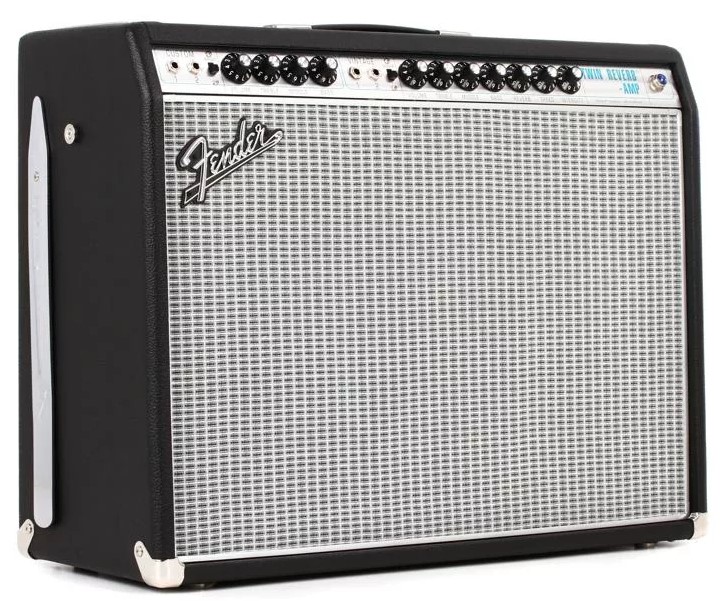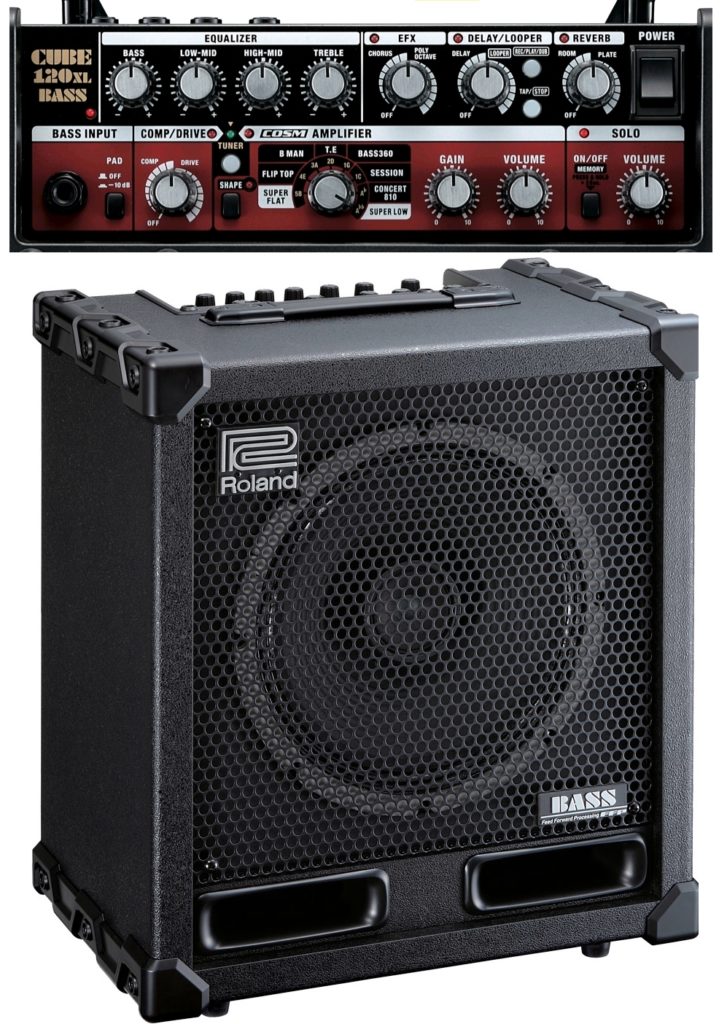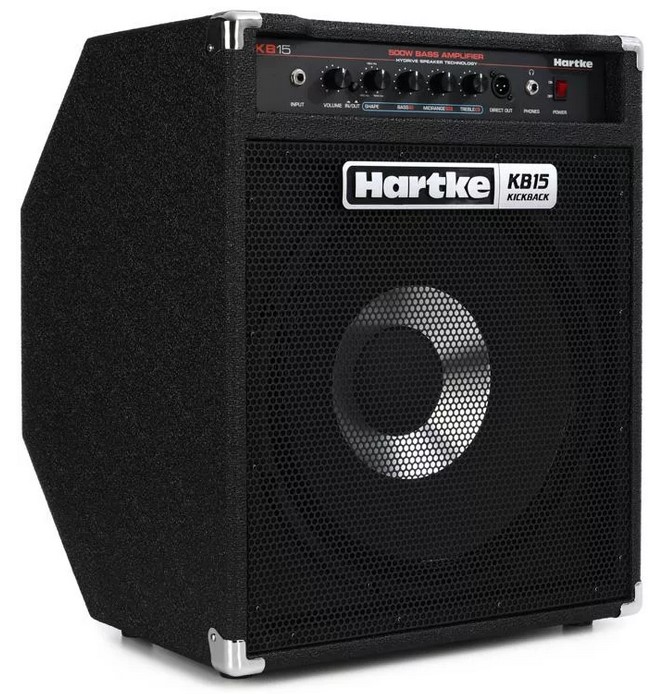This is going to be a somewhat esoteric series of posts — i.e. of limited interest to most people — but hey, variety is the spice of whatever, right?
As with all things, your opinions may differ from mine — in this series, it’s about “sound” and “feel”, and no more divergent criteria exist — but there ya go.
Today we are talking about amps for electric guitars and bass guitars, because I’m sick of seeing clickbait links to some guy talking about the “best” or “best ten”, and finding myself in complete disagreement not necessarily because of his choices, but of his test equipment and criteria. I have a few prejudices on the topic (based on years of playing in a rock band), but I want to set the ground rules — testing standards, really — right up front so we can all see the “truth”, so to speak.
Typically, we see the tester (almost always a guy) holding a guitar and extolling its virtues, maybe riffing a little to make his point, and so on. Then we see that what’s really happening is that he’s playing said instrument through a whole bunch of pedals which enhance or otherwise improve the sound. And who can make a judgment based on that? Even worse is when these guys then try another instrument, but through a whole different bunch of pedals and another type of amplifier.
In the testing business, that’s called “bullshit” (I know, a very technical term), because the essence of testing is that it has to take place in a common universe or using identical testing procedures / equipment, or else it’s just nonsense and we end up with that tiresome (but accurate) cliche of “apples to oranges” and such.
When testing a guitar, lead or bass, find ONE amp and use it for all your testing. The guys at Sweetwater generally do it right in their demonstration videos, usually using a Fender Twin Reverb 85w amp in some shape or form. I happen to think that the venerable Twin Reverb is the greatest guitar amp ever made, and all others differ simply in terms of their sound, whether the Vox AC-30, the Marshall 1959 or the Mesa/Boogie Mark Five. (All would be excellent choices as a test amp, by the way, but the Twin Reverb has the cleanest sound and therefore makes it a first among equals.) Generally speaking the simpler the amp, the better (for testing purposes), which means that all the “modeling” amps (which use electronic trickery to mimic sounds of other amps) are a waste of time, unless you use the same amp voice consistently. But few do. As a test bed, simpler is better, and the Twin Reverb is an outstanding choice.

If I were a lead guitarist in a gig band, my top 3 choices for an amp would be: 1.) Fender ’89 Custom Twin Reverb, 2.) Fender ’65 Twin Reverb and 3.) Marshall JVM210C 100w. (If you want to see how they sound, go to their respective links and scroll down till you get to the demo videos.) Note that whatever amp I chose, the type would be a combo (amp and speakers in the same cabinet), because when you gig, it’s easier to carry an amp in one hand and a guitar in the other, and combo amps pack more easily in the van.
On another note, I prefer the sound of valve guitar amps, but valves do degrade over time — I know, like batteries in a guitar — but the downside of a solid state amp is if a transistor goes (it does happen, it’s happened to me), you’re left with silence; if a valve goes, the others will keep on going until you get to put in a new one. But nothing beats the velvety sound and smooth distortion of a valve amp, which is why 90% of the world’s guitarists use them.
When it comes to bass amps, I’m (surprisingly) in favor of solid state amps. I’ve used both (Fender Bassman and Orange for valves, and Roland for solid state), but the reason I prefer transistor-driven bass amps is that I like a simple, clean bass tone (it’s a rhythm instrument and not a lead one, although people like Mark King and Billy Sheehan have blurred the lines somewhat). And speaking of the aforementioned virtuosos, while I envy greatly their skill, I happen to hate the sound that each uses: King’s is very thin to my ears, and Sheehan’s is dirty — the very antithesis of what I like to produce. For those interested, here’s a list of some other bassists; the rankings are unimportant, because any one of them could have been in the top 20, interchangeably.
Once again, if I were going to go out and gig today, I’d probably use a Roland Cube 120XL (because they don’t make my old rig, the RB-120 anymore, the fools):

I know, it’s got a modeling feature (COSM), but I’d only ever use one — the “Session”, which is essentially their old “Studio” bass amp circuitry, and one of the best-sounding amps ever made. They stopped making that amp too, the idiots x2. (I have a Cube XL-30 right now, as it happens, and I love it.) The Cube series of bass amps are also wonderfully light, which is no small thing for gigging.
Side issue: Roland does this all the time — introduce a brilliant amp, then discontinue it after a few years — and it irritates the shit out of me. Their GA-212 guitar amp was the coolest one ever, and it lasted about five years before they ditched it. The only one they’ve never had the nerve to kill is the peerless Jazz Chorus, and which would be one of my solid state amps of choice for a gig.
Simple is best, for me. All there needs to be is gain, volume, treble, mids and bass controls, and Kim’s a happy camper. Something like this:

So if I couldn’t find a Cube 120-XL and needed a simple (and available) solid state combo bass amp, then I’d probably go with a Hartke KB15 (1×15″ speaker, 500w):

“Why a 500w amp, and why a 15″ speaker, Kim?”
I need the power because I keep the gain (pre-amp drive) low to prevent distortion, ergo I need more power at the power amp stage. And as for the speaker: bass is all about moving air, and a 15″ speaker moves air better than a 10″ or even a 12″ — and it handles bass frequencies better, in my experience. I’ve played the Kickback before, not at a gig, and I was astounded at the clarity of its sound. (Also, bass virtuoso Victor Wooten loves the Kickback, so who am I to argue?)
Okay, so we’ve established the amps I’d use, whether testing or for a gig: the Fender Twin Reverb for guitars, and the Hartke Kickback for bass. Tomorrow, I’ll rank my favorite guitars of each type.

I can’t quibble with much of this, other than I’ve found Roland amps noisy. Especially the smaller ones. I myself used many kinds. But my current one is an Acoustic AG30. It’s small, shaped like a monitor, and has a line out which went to the PA. Previous I used a Carvin copy of the twin reverb. It was too much for the venue. Either that or I needed dough and sold it. (Probably what happened).
You’re right about basses. Moving air is everything, since low notes don’t travel as well. It’s all fun and games with that 10 or 12 inch woofer until you are in a large venue or outside and realize you can’t hear yourself. This is why I have an acoustic B600HD and an 18” Carvin bass speaker. Knowing what I know now I’d have bought the B1000.
Good info on bass gear, as usual. My only disagreement is your assessment that Mark King has a “thin” sound. That may have been true when he was an Alembic player but not the case since he switched to Status basses. The growl that he gets from his gear on this track is sternum-rattling: https://www.youtube.com/watch?v=HAqc2dguSow&ab_channel=Level42-Topic
LOL I once played a (borrowed) Alembic when the Rick was at the doctor, and after the first set the drummer and guitarist asked me when the Rick would be coming back. Horrible basses, even played full strength (bass turned up to the max), it sounded like the sound was coming through a tin can and string.
At the next gig the following night, I switched to a (borrowed) Hofner fretless with flatwound strings, and everyone agreed it sounded better than the Alembic.
Your amp issues are exactly the same as audiophiles have with “reviews” of stereo gear in the mainstream audio mags. They are absolutely useless. Universally, they have no reference. When I have someone tell me that “loudspeaker X” sounds glorious, I ask them compared to what? Every time I get a blank stare in return.
… and personally, I agree with you – valves are far more musical than transistors. This is why guys like William Z. Johnson’s “Audio Research Corp.” saved the tube from extinction and gave the world High Fidelity reproduction. In the process he inadvertently saved the vinyl record as we were finally able to extract the information contained in the groove. Magnetic tape is its only rival.
Interesting read. Thanks.
Thankee. This post started off as a four-line piece, then grew like Topsy until I had to cut it short. I could have written about three times as much as I have, but mercifully for everyone, decided that I didn’t want to wander too deep into the Musician Dork Forest.
One Reader sent me a pic of his guitar gear via email, and I was humbled. If anyone else wants to do the same, go ahead, and I might do a feature piece on that if it’s sufficiently interesting.
I have another post brewing based on some advice once asked of me by a youngin — a friend of the Son&Heir — about what gear his band should consider for a career of gigging. (The guitar amp discussion above was part of that advice.)
If anyone is interested in THAT, please let me know either here or by email.
And forays into Acid Jazz/Experimental Jazz with a Blues bent:
https://m.youtube.com/watch?v=p-cDz6FW62E
A couple-three hours north of us is Warmoth ax parts outside Tacoma in Worshington the state.
I usually have a couple-three Warmoth Telecaster clones in various stages of tweeking, but so far, nothing comes close to the old ’59.
Ken was a good friend of mine. He taught me a lot about excellence in all sorts of ways.
Integrity and honor. Ken Warmoth RIP.
Music man RD 50 is my amp- looks like something the cat dragged in after 40 years.
Tubes, single 12″. No pedals. I also have a table top modeling amp for headphones, a Yamaha THR 10- sometimes it gets stacked on the MM and used as a pre amp. this is all for fun, not a pro at all.
Usually the MM stays in the shop where I work, and when something fun comes on the speakers, I can walk over and pick up the guitar and jam. One odd benefit of being a sole proprietor in a manufacturing job.
Since I play for my own amusement, and I’m not much into trading gear, I have largely stuck with the amp I bought when I started guitar lessons in 1970, a Fender Tweed Deluxe. A previous owner had switched out the Jensen speaker for a Tannoy, probably because it fit the space, but it didn’t last, so I replaced it with a period correct re-coned Jensen in the 80’s. Went through a long string of guitars before I determined that it was my lack of talent, not the guitar, that left me wanting. Settled on a PRS McCarty in ’95 and aside from a few tube changes, that’s all I’ve got and all I’ll ever have.
Now, let’s talk turntables!
I’d be hopeless at testing and reviewing guitar gear. I gigged for years with exactly the same setup, guitar, amp, pedals, leads even picks and brands of batteries. Had everything set they way I liked it. Never let anyone else set up my gear. At one stage I started duplicating my signal chain for redundancy reasons but couldn’t get two identical pedals to sound the same to my ears, let alone two guitars. Ha, at times I used to hate how that gear sounded so would eventually start swapping components in and out but always ended up back with my standard rig.
Agree with you on Fender amps. I used to gig with a Silverface 100w Fender PA100 and a quad box with four celestion speakers. Like the TR a nice platform but only really has one tone, hard to overdrive those amps without destroying your hearing, and yes, I tried.
Late 90s we started running everything through FOH so my amp became mostly a personal foldback thing rather than providing noise to the crowd directly. This approach makes large amps redundant. Does mean you can talk on stage though.
I also happen to think guitarists generally are full of shit about this tone stuff, yes including me. The people on the receiving end don’t know / don’t care if your Guitar is a 56 burst or a $200 Chinese knockoff, all they want is something that matches sorta the memory sounds they have. What I’ve observed over the years is that it wouldn’t matter what you gave Santana or Clapton to play with, in a minute they would just sound like they always do. 90% of the sound that’s individual is in they players technique.
I think the music industry is a lot like golf. Somebody will ALWAYS sell you something to make you “better”. The thing that works best is practice, but that’s work. Most would rather buy a new widget, one like “Player X” uses. Alex Lifeson plays Gibsons, but he would sound the same on a Paul Reed Smith, or a Parker, or even an Ibanez, because he can play.
“I also happen to think guitarists generally are full of shit about this tone stuff”.
Maybe. But there is a difference in sound between pickup brands — slight, but noticeable when you’ve been playing for a long time. Strings likewise — Ernie Ball .007s sound quite different from D’Addario .008, and so on.
Ultimately, though, there is no “best”, per se. It’s what sounds best to you, the player. Even though the audience, as noted here, seldom has any clue or interest in what gear you’re using.
I like the Line6 modelling amps for guitar, I can control it from my phone. I know this is not the acceptable view. I also have a Marshall ‘equivalent’ to a twin reverb that I like. As a bass player I still have and love my Ampeg SVT 8 – 10 inch cab powered by a hand wired Sound City Bass 150 from 40 years ago (my cat likes sitting on it). When I play bass however I usually choose my small Line6 bass amp it sounds great.
This is still Murrica (at the moment), so valves are what you find in your car or faucet and tubes are what you find in your amp or antique radio. Being edumacated by Brits and Yanks I get to play games with the different usages which are legion. That old truism of America and England being separated by a common language is quite accurate. I can build you the amplifiers but have zero musical ability to use them as would a musician. If the scope and THD meter shows low distortion when comparing the input and output waves, I am good to go.
When my son took up bass, we went to look at amps for him. We found a series of TC Electronics amps, the same 250 watts with a 15″, 12″ or two 10″ speakers in the same combo. We chose the 12″, because the 10’s sounded too bright, and the 15″ sounded a little “flabby”, compared to the 12″. YMMV, but that was how they sounded to us. Our guitarist uses a Blackstar 2×12″ combo, and on keys, I use no amp, all in-ear monitors. Lotta changes in music, these days.
I think the music industry is a lot like golf. Somebody will ALWAYS sell you something to make you “better”. The thing that works best is practice, but that’s work. Most would rather buy a new widget, one like “Player X” uses. Alex Lifeson plays Gibsons, but he would sound the same on a Paul Reed Smith, or a Parker, or even an Ibanez, because he can play.
No argument there, although the advances in electronics have made very real differences in amplification and sound shaping.
I’ve been playing through a Fender Stage 112 since about 1992 and will prolly die with the same amp. I get bored quickly with “comparison” articles cause, well, they ain’t me. They don’t like what I do.
For many years I had a tangle of cords and pedals all over the place then I got the Digitech RP1 and sold everything else cept the wah peddle. I’m all about keeping it simple, easy to use.